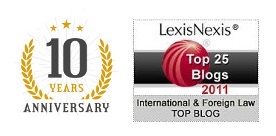
Defective or dangerous products cause thousands of injuries every year. If a defective product has seriously injured you or your loved one, you may be able to take legal action against the manufacturer or other responsible parties.
Product liability law is the area of law that deals with these types of claims. It is designed to hold manufacturers and other sellers responsible for injuries caused by their products.
The law is based on the legal theory of strict liability. This means that a manufacturer or seller can be held liable for injuries caused by their product, even if they did not do anything wrong.
This article discusses everything you need to know about product liability law, including how it works, what types of claims are covered, and what you need to do to take legal action.
What Is Product Liability Law?
Product liability law is the area of law that deals with claims arising from injuries caused by defective or dangerous products.
The law is designed to hold manufacturers and other sellers of products responsible for injuries caused by their products.
Three main types of product defects can give rise to a product liability claim. They are:
1. Design defects
These are defects that exist in the product from the very beginning. That is, the product is dangerous or defective because of the way it was designed.
For example, if a car has a design defect that makes it prone to rollovers, anyone injured in a rollover accident may have a claim against the manufacturer.
To win a design defect claim, the plaintiff would have to show that the product was not reasonably safe for its intended use.
2. Manufacturing defects
Manufacturing defects usually occur during the manufacturing process. A manufacturing defect can make an otherwise safe product dangerous or defective.
For example, if a toy is made with lead paint, anyone injured by the toy may have a claim against the manufacturer.
To win a manufacturing defect claim, the plaintiff would have to show that the product was not made according to the manufacturer’s specifications.
3. Warning defects
Warning defects are defects in the product that make it dangerous or defective due to a lack of proper warnings or instructions.
For instance, if a power tool does not warn about the risk of electrocution, anyone injured by the tool may have a claim against the manufacturer.
To win a warning defect claim, the plaintiff would have to show that the product was not reasonably safe for its intended use due to a lack of proper warnings or instructions.
What Are the Legal Bases for Product Liability Law?
Product liability law is derived from two other laws, namely; contract law and tort law. Many states have also enacted product liability statutes used to define the scope of product liability.
Product Liability and Tort Law
Torts are basically civil wrongs that are recognized by law. A person who commits a tortious act may be held liable in a civil lawsuit.
The three types of torts are negligence, intentional, and strict liability torts.
Intentional torts are civil wrongs that are committed on purpose. For example, if someone assaults you, they have committed intentional tort.
Negligence is a type of tort that occurs when someone fails to take reasonable care to avoid harming others. For example, if a driver fails to stop at a red light and hits another car, they may be liable for negligence.
Strict liability does not require the plaintiff to prove that the defendant was negligent. It only requires the plaintiff to prove that the product was defective and that the defect caused their injuries.
So, product liability law is based on the legal theory of strict liability. That is, a manufacturer or the seller can be held liable for injuries caused by the product, even if they did not do anything wrong.
Product Liability and Contract Law
Contract law is the area of law that deals with agreements between two or more parties. A contract is a legally binding agreement between two or more parties.
In many states, the sale of a product is considered a contract between the seller and the buyer.
Under contract law, the seller of a product is obligated to provide the buyer with a product fit for its intended purpose.
For example, if you buy a pair of shoes, you expect that the shoes will be able to be worn without falling apart.
If the shoes are not fit for their intended purpose, you may have a claim against the seller under contract law.
So, product liability law is also based on contract law. That is, a manufacturer or other seller of a product can be held liable for injuries caused by the product if the product is not fit for its intended purpose.
How Does Product Liability Law Work?
Product liability law is based on the legal theory of strict liability. This means that a manufacturer or seller can be held liable for injuries caused by their product, even if they did not do anything wrong.
Three elements must be present for a successful product liability claim:
- The product must have been defective or dangerous.
- The defect must have caused the plaintiff’s injury.
- The plaintiff must be able to show that the manufacturer or seller knew or should have known about the defect.
Product Defects: Responsible Parties
For product liability to arise, it means that the product was sold in the marketplace at some point.
Now, the problem might have occurred at any stage in the supply chain. The problem could have occurred when the product was being manufactured, when it was being distributed, or when it was being sold.
The point is that the manufacturer or seller can be held liable for injuries caused by the product, even if they did not do anything wrong.
Remember that a contractual relationship, also known as privity of contract, must have existed between the person injured and the person being sued for the product liability to arise.
So, if you are injured by a defective product, you may be able to sue the manufacturer, the distributor, or the retailer of the product.
It is important to note that not all states allow suits against retailers. In some states, only manufacturers and distributors can be held liable for injuries caused by their products.
Common Defenses to Product Liability Claims
There are several defenses that a manufacturer or seller can use to defend against a product liability claim.
The most common defense is that the plaintiff did not use the product as intended.
For example, if you are injured by a power tool, the manufacturer may argue that you were not using the tool as intended and that your injuries are your own fault.
Another common defense is that the plaintiff knew or should have known about the defect.
For example, if you buy a used car and are later injured by a defect in the car, the manufacturer may argue that you knew or should have known about the defect when you bought the car.
Another defense a product manufacturer might use is that the plaintiff altered the product after it left the manufacturer’s control.
For example, if you buy a computer and later add an extra hard drive, the manufacturer may argue that the added hard drive caused your injuries and not a defect in the original computer.
Finally, a manufacturer may also argue that the product is not defective because it meets all applicable safety standards.
Conclusion
Product liability law is a complex area of the law, but it is essential for consumers and businesses.
By understanding the basics of product liability law, consumers can be better informed about their rights when something goes wrong with a product, and businesses can protect themselves from lawsuits by ensuring that their products are safe.
We hope this article has provided you with a basic understanding of product liability law and its many facets.


 12+ years sharing great legal advice
12+ years sharing great legal advice
